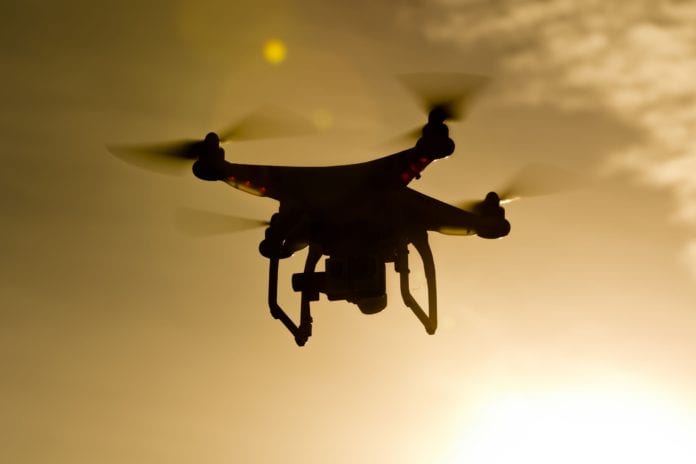Rohde & Schwarz company ipoque is partnering for the R&D project on detecting drones through 5G network analytics
A new research project based in Germany is exploring the possibility of using 5G network data to detect and mitigate the threats of unauthorized drones.
The research and development collaboration includes Rohde & Schwarz’s ipoque and the Helmut-Schmidt University of the Federal Armed Forces Hamburg (HSU/UniBw H), and relies upon the university’s 5G campus network, which was established by Deutsche Telekom Global Business and Ericsson.
According to a release from Rohde & Schwarz, the research team “will focus on anomaly detection in 5G Campus Networks and drone detection in mobile networks” through “analyzing patterns within vast 5G network data streams.” Ipoque will be contributing its expertise in network analysis software to the project.
Unauthorized drones are considered a security threat at places such as airports and stadiums.
“This collaboration represents a crucial step towards harnessing the power of 5G network analysis for national security,” said Professor Gerd Scholl, who is leading the project at HSU/UniBw H. “By developing sophisticated anomaly detection capabilities, we can significantly enhance the protection of sensitive areas against unauthorized drone activities.”
In other test news:
–Rohde & Schwarz had a number of other announcements this week, including achieving Global Certification Forum approval for Frequency Range 2 Radio Resource Management (RRM) conformance test cases for 5G Standalone. The 5G SA RRM test cases include both one and two angles of arrival within 5G mmWave band combinations, Rohde & Schwarz noted.
“Our technology will help ensure the quality and reliability of 5G devices while addressing the challenges in the FR2 frequency range,” said Thomas Eyring, senior director of device certification at Rohde & Schwarz, adding: “We are also working on test cases for the upcoming FR3 frequency range, which is expected to play a key role in 6G networks.”
Rohde & Schwarz also debuted a compact direction-finding antenna for spectrum monitoring, and said that it will be highlighting new capabilities of ipoque‘s deep packet inspection (DPI) with artificial intelligence enhancements for Encrypted Traffic Intelligence (ETI) solution at the upcoming MWC Barcelona 2025 conference.
–O-RAN Alliance has announced its spring plugfest event for 2025. The event will take place through May 2025 across eight venues and 18 labs around the world, and there are half a dozen prioritied “themes” for testing, including energy consumption and savings; end-to-end deployment templates and test automation; fronthaul testing; O-RAN system testing with Layer 1 acceleration; white-box hardware diversity; and open fronthaul transport testing with multiple open Radio Units (O-RUs).
The call for participation is open until Feb. 21, and more information is available from O-RAN Alliance here.
–Viavi Solutions said this week that its Nitro wireless test portfolio has been used to validate the over-the-air (OTA) performance of Nokia’s AirScale Habrok 128TR massive MIMO radio in the upper 6 GHz band.

Nokia and Viavi tested the massive MIMO system at Nokia’s Otava lab in Oulu, Finland, with the radio configured to operate at 6.425–7.125 GHz. The test set-up included Viavi’s TM500 Network Tester and its OneAdvisor 800 spectrum and signal analyzer, to assess peak throughput for one Component Carrier (1CC), and two Component Carriers (2CC) with downlink and uplink Carrier Aggregation (CA), as well as looking at capacity validation through emulation of hundreds of devices and data traffic.
–Ookla published analysis this week looking at the rural 5G availability and strategies of each of the three national carriers. Read the full piece here.
-Test company Anritsu said that medical device manufacturer Wellell is using Anritsu’s a Radio Communication Analyzer MT8821C and its Wireless Connectivity Test Set MT8862A to conduct IoT connectivity testing for the company’s respiratory therapy devices and pressure relief mattress products.
-ICYMI: While 5G Standalone deployments have moved slower than expected, in part due to less monetization of services than the industry had expected, Spirent Communications says in a recent report that the “lack of visible commercial deployments in the field doesn’t tell the whole story” of 5G SA. Read more on that in this article.

